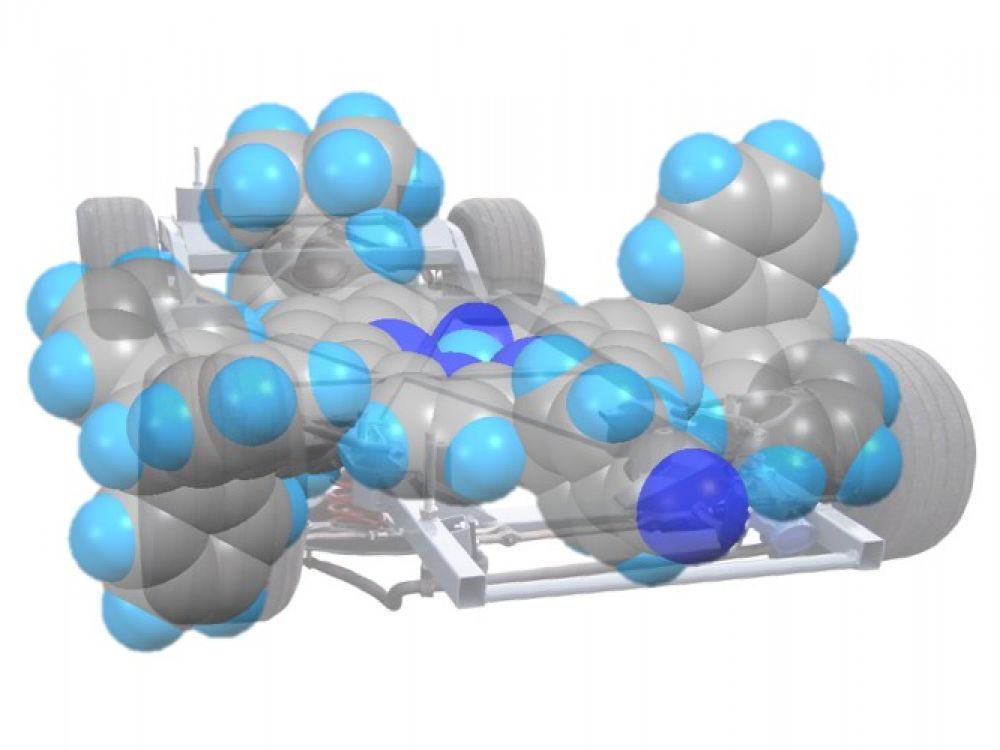
Nanocar Race: the smallest car race in the world
Notice to motor racing fans, an international competition will be held in Toulouse on March 24 and 25, 2022. On the starting track, cars a few nanometers across: molecular cars, “A million times smaller than an ant”Toulouse member Gwénaël Rapenne identifies at the start of the competition.
For 24 hours, eight teams of researchers from around the world will compete in thenano car which they developed. The winning team will be the person whose car has traveled the most distance. An event that can be watched live on YouTube NanoCarRace And in the video below.
It all started with a joke…
“I wrote, for fun, that we had to organize a car race.” Christian Joachim Organizer Nanocar II . Racing, remembers the context in which the competition was born in 2013: a joke noted in an article in a scientific journal. The idea gained momentum and after the CNRS competition to reward the best idea for promoting science to the public, the first edition of the Nanocar Race was launched.
And this joke continues since the renewal of the experiment. Since 2018, the start of the second edition will be given on March 24, 2022. The opportunity to update the rules and make some adjustments. “In the first version, the smart guys tried to get around the rules to get ahead, and they played with the electric field, The race organizer explains. This year, we enforced a slalom to avoid this phenomenon.
To make sure all teams respect the terms, they will have to submit pictures of their molecule for each action taken. “We want to see where she went.” This picture-by-picture rule should make it possible to understand what happens to each molecule, however different (with wheels, legs, chassis, etc.).
The pilots are in Toulouse but no vehicle on site
The eight participating teams will be brought together under Paul’s Center for Materials Development and Structural Studies (CEMIS) in Toulouse, but without their molecular compounds. These will remain in the teams’ research labs and will be piloted remotely. “Our microscope is 300 meters away in another building. The eight teams use a different remote-controlled microscope from the same location.”Explains Guinel Rabin who has a chance to compete on his turf almost.
These microscopes, known as scanning tunneling microscopes, are essential for racing. First, they make pictures: “The computer is asked to maintain a constant electric current between the tip of the microscope and the surface. When the tip is close to an object, it is then necessary to adjust the height to maintain a constant current. It is this difference that results in the imagining of a being on the surface.describes Henri-Pierre Jacquot de Rouville, a chemist on the Strasbourg team.
But they have another purpose: to move the molecule forward. “They work a bit like bumper cars. The bumper car is powered by the mesh above which allows it to move forward. The tip is the equivalent of the vehicle’s power rod: You put the molecule and we’re going to feed it current” and explain Christian Joachim.
‘Understanding the reason for his progress’
“There is scientific continuity, not just enjoyment”, The organizer would like to be reminded of the event. The first edition has already set the bar high. “The goal was to show that we can control four molecules independently on the same surface, which has never happened.” The technical prowess that would find resonance in particular in the development of the quantum computer. Another area of interest: molecular motors, i.e. motors that are very small with a size of a few millimeters. But above all, the researchers’ goal is to understand”Why advance without pushing the molecule.”
Who says serious competition, say hand-picked teams. For Christian Joachim:Very few people know how to make an F1 engine even if they want to do it. “ Same condition here. The contestants were selected according to the rigor of their project, to retain only eight teams from around the world between the United States, Japan or Europe.
“Our molecule is kind of outside: two wheels with a small platform in the middleDescribe Henri-Pierre Jacot de Roville. It is very small (136 atoms), solid, symmetric and dipole (The molecule then has two ends, two poles, because the electrons are not uniformly distributed over the structure, NDRL). In general, most teams preferred a dipole, as it is the easiest way to move the molecule forward. “ Gwenel Rabin, whose team chose a similar strategy, continued: “This makes the polar molecule like a tiny magnet.”
Communication between scientific disciplines within each team is essential to implementing an effective strategy, as described by Henri-Pierre Jacquot de Rouville. “We need chemists, and automobile engineers, to make the molecules. You need a physicist, the equivalent of a pilot. Finally, there is a need for theorists who will compute one or more images of the molecule, because it can take on certain configurations, and therefore its interpretation is not necessarily obvious.”
A human adventure above all
Winning is off target. Everyone agrees that it is above all a human adventure and a scientific simulation. “We have strengthened our cooperation relations and exchanged a lot of ideas, Gwenael Rapenne’s comments. For example, do we need wheels in a car at the molecular level? Not really, we realized in the first race thanks to the discussions between us.
For Henri-Pierre Jacquot de Rouville, the history of molecular cars is still in its first chapter. He has big ambitions for them:We are in the stage of the first car race in history where it took almost 7 hours to connect Paris to Bruin. The goal is not to stop there. You have to think of the Grand Prix where the cars are very fast, or the 24 Hours of Le Mans where endurance is tested.

“Organizer. Social media geek. General communicator. Bacon scholar. Proud pop culture trailblazer.”
